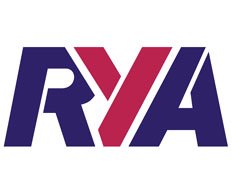Exhibitions are a great place to start networking with likeminded individuals and with people who are looking for your services. But, even the best of us can get a few networking nerves, especially when you’re in a hall full of people.
So, here are a few top tips to make you a networking pro at your next exhibition.
Business Cards
They have been around for hundreds of years, and they aren’t going anywhere, these little cards are the backbone to networking, they make the whole process worthwhile.
Make an impact with an amazing design but remember to try and tell your company’s story through this card. This card will be the face for your business when everyone goes back to their offices; you want to make them want to get in touch with you.
If you want to make the process of someone getting hold of you easier, you could use a barcode which when scanned will input your contact details.
However, if you do decide to take this approach, include a written version of contact details as well.
Possibly the most important thing to remember with business cards is to have enough of them!
Interesting Questions and Memorable Answers
Don’t get caught in the trap of asking mundane, repetitive questions with boring answers. These are going to make you forgettable.
Researching who will be at the exhibition before the event allows you to find out about what their business is and come up with relevant and interesting questions about their industry or job role.
In return, you do not want to give boring and generic answers – you want to stand out! So, it is always best that you have a few answers stored for the typical questions you receive at a networking event. Think of fun or interesting answers to these.
Body Language
Body language will get you far when it comes to networking, and even if you’re terrified, if you look relaxed everyone will think that you are.
Think confident and relaxed, emitting this kind of body language will, in turn, make your companion relax in your company as well allowing for some great networking to take place!
Remember always to smile and shake everyone’s hand when greeting and saying goodbye; it is also important to keep the appropriate amount of eye contact – think interested, not obsessed.
If you act the part, it will make the whole process easier for everyone involved and you will get into the flow of your conversation much quicker, which means more time for networking properly and building working relationships.
Follow Up!
This could potentially be the most important part of the whole networking process, and it’s the easiest to forget as well.
Developing a relationship takes more than just a 15-minute chat at an exhibition. Connect with your leads via email, social media and you could even give them a call.
Build a working relationship where you could refer clients to each other and in turn convert this individual to use your services.
It’s important to keep this relationship going past leaving the exhibition hall doors!

















